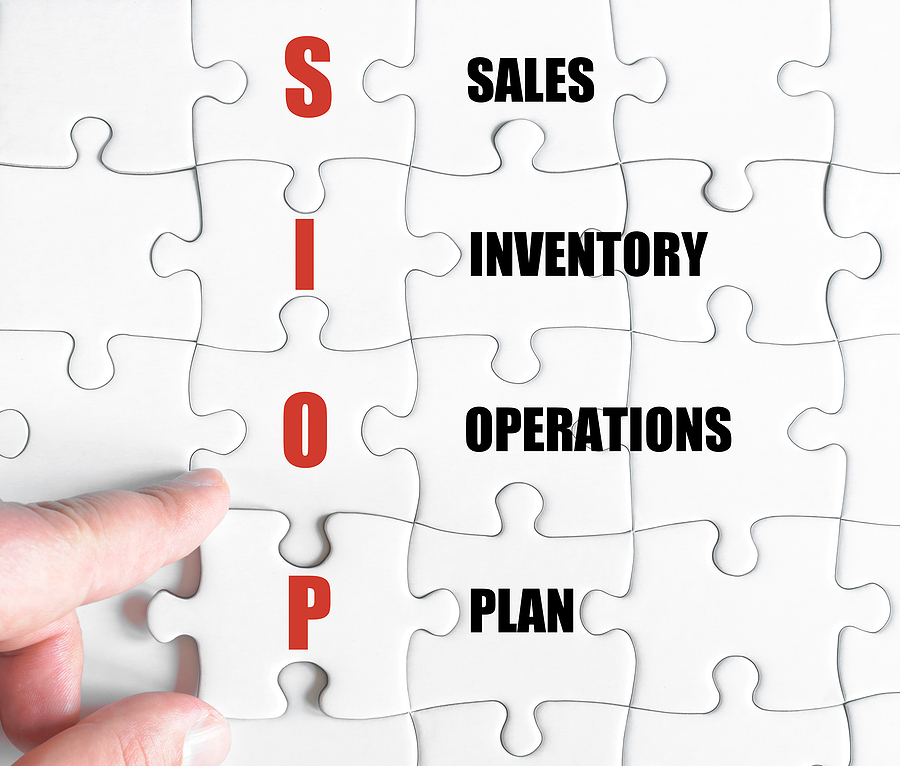
SIOP (sales, inventory, & operations planning) taken to the best practice degree is often associated with integrated business planning. In some circles, they are seen as interchangeable. In others, it is seen as the “next step” for SIOP. It is nomenclature to me as I see fully leveraging SIOP as common sense.
Substantial results will follow. For example, several of my clients have achieved one or several of the following with SIOP/ Integrated Business Planning: 1) successfully supports dramatic growth; 2) improved service levels; 3) slashed lead times; 4) improved margins. 5) accelerated cash flow. 6) increased productivity.
Why not use SIOP as a core process to running the business? Wouldn’t that be a common sense approach to success? As the famous William Occam said, “the simplest solution is often the best”. This also syncs up with what I’ve found to be the most successful philosophy – start with the the simple and expand with what will provide the most value to your organization.
So, what are the common keys to success?
- Start with demand: It is always appropriate to start with demand. Focus in on your customers. What do you expect your customers to buy? Which products are most popular? What else can you offer your customers to go the extra mile? Getting a solid handle on demand is a great place to start.
- Forecast accuracy: The more predictable your sales, the less inventory you’ll need to carry to meet customer expectations. How volatile are your customers’ ordering patterns?
- Rolling # of months or years: As each month goes by, you’ll want to add a month to the end of your planning cycle. In essence, the concept of a rolling plan is essential to ensure you take the long-term, continually reviewed and updated view. I love the way one of my manufacturing clients describes this concept – it’s like a conveyor system where one month drops off and the next one gets added on.
- Inventory strategy: Your inventory strategy is one of the factors that will be used in the development of the master schedule. How many turns are achievable for your industry and in supporting your company strategy? Inventory is used to cover volatility and lead time. What is needed?
- Service level plans: What are your customer expectations? Where do you stand in the market? Should you shoot to be competitive, distinct or breakthrough on service and lead times? These factors will affect your resulting inventory expectations.
- Master schedule: Translate the demand into supply requirements. Combine demand, inventory strategy, level loading, and lot sizing into a master production schedule.
- Purchase plans: Translate your master schedule into a purchase plan. Similar to the master schedule, combine the master schedule, inventory strategy, level loading and lot sizing into a purchase plan.
- Inventory plan: Once you know your demand plan, master schedule and purchase plans, the resulting inventory plan will follow.
- Capacity plans: How do your staffing and machine capacity plans align with your master schedule? Will you need to ramp up? Cross-train? Purchase machinery and equipment?
- Cost & margin plans: It only makes imminent sense to sync these plans with your cost improvement plans. Assuming you have a good handle on your pricing and mix, a margin plan will emerge.
- Cash flow plans: Once your inventory plan is known, it is achievable to estimate cash flow requirements and plan accordingly. Will you need financing? Can you support your growth and investment objectives with your inventory strategy?
- Make vs. buy decisions: Strategic decisions including make vs. buy options will arise through the SIOP process. The right people are together to evaluate what will provide the most value for the business.
- Capital plans: Certainly, capital plans will be a by-product of the SIOP process.
- Collaboration plans: How do your integrated business plans align with your customer and supplier programs? Share critical information and collaborate for success.
- Communication & alignment: One of the key advantages of a SIOP process is to align ALL functions, customers and suppliers on one plan. Clarification rules!
- One plan: The concept of one plan is paramount to SIOP success as the 80/20 is in alignment, collaboration and execution with clarity.
- Action items: Let’s not forget action items. Without solid execution and follow-up, no process will thrive.
If you follow these key factors for success, your monthly SIOP process will align resources and result in a rolling forecast that integrates with your financial plans and operational plans. In essence, you’ll have the 80/20 of running a successful business in one place. To learn more about how to implement SIOP, read our book, SIOP (Sales Inventory Operations Planning): Creating Predictable Revenue and EBITDA Growth.


